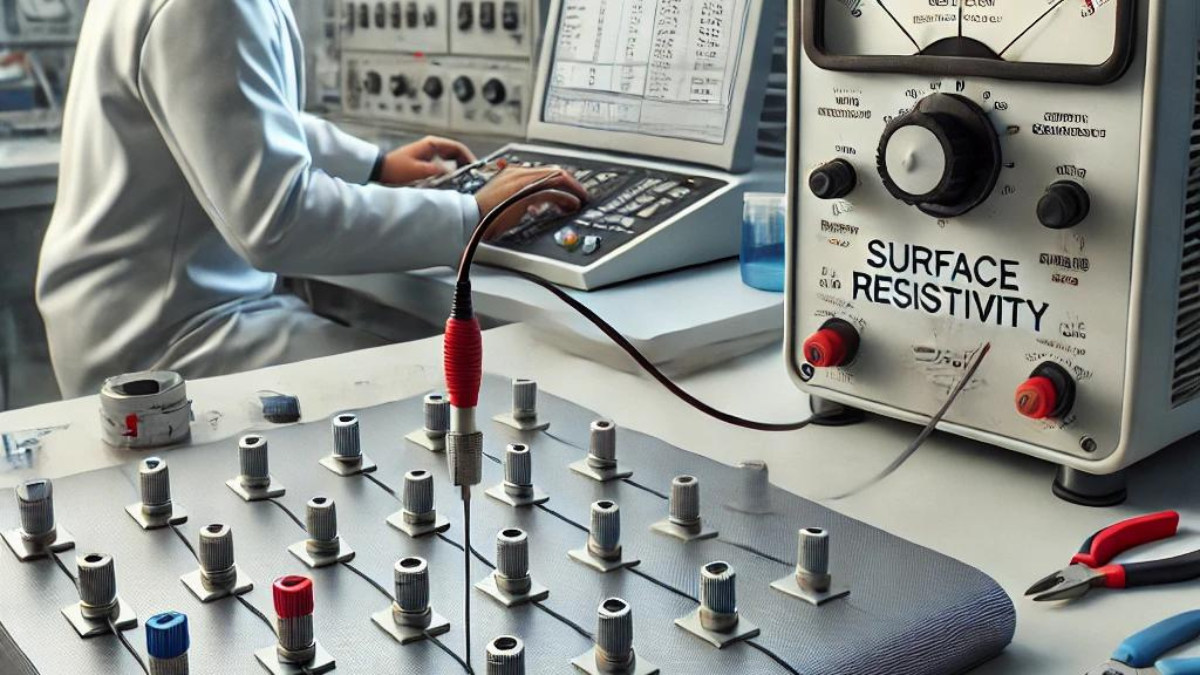Surface Resistivity Testing As Per ASTM D257
Ensuring Material Integrity: Surface Resistivity Testing According to ASTM D257
Introduction
- Surface resistivity testing is a critical process for evaluating the electrical insulating properties of materials used in various industries, including electronics, aerospace, automotive, and construction. The ability of a material to resist electrical current across its surface determines its suitability for applications requiring high insulation performance. ASTM D257, the industry standard for surface resistivity testing, provides a comprehensive guideline for measuring the resistance of insulating materials. In this blog, we’ll explore the importance of surface resistivity testing, the key aspects of ASTM D257, and how this method helps industries ensure safety and efficiency in their products.

What is Surface Resistivity? Surface resistivity refers to the electrical resistance of a material along its surface. It is crucial for materials that are used as insulators in electrical and electronic applications. The measurement is expressed in ohms per square (Ω/□) and reflects how well a material prevents the flow of electrical current across its surface.
High surface resistivity indicates that the material is a good insulator, making it suitable for use in products like electrical insulators, coatings for electronics, and insulating materials in construction. On the other hand, materials with lower surface resistivity are more conductive and may be used in applications where controlled conductivity is needed.
ASTM D257: The Gold Standard for Surface Resistivity Testing ASTM D257, titled “Standard Test Methods for DC Resistance or Conductance of Insulating Materials,” provides a standardized method for measuring the surface resistivity and volume resistivity of insulating materials. This standard ensures that the testing process is consistent, repeatable, and accurate across different laboratories and industries.
The ASTM D257 test method helps in determining the following:
- Surface Resistivity (ρs): Resistance to electrical current along the surface of the material.
- Volume Resistivity (ρv): Resistance to electrical current through the body or volume of the material.
These properties are essential for evaluating the effectiveness of materials used in electrical insulation and determining their ability to prevent leakage currents that can lead to short circuits or component failure.
The Importance of Surface Resistivity Testing:
- Electrical Safety: Insulating materials are crucial for preventing electrical hazards such as short circuits, sparks, or electric shocks. Surface resistivity testing ensures that these materials perform as expected under various environmental conditions.
- Product Reliability: By measuring surface resistivity, manufacturers can ensure that materials used in sensitive applications like circuit boards, high-voltage systems, and consumer electronics are reliable and meet performance standards.
- Quality Control: ASTM D257 provides a consistent testing methodology, ensuring that products meet stringent quality requirements and comply with industry regulations.
The Surface Resistivity Testing Process:
- Sample Preparation: The test material is cleaned to remove any contaminants that could affect the accuracy of the results. The specimen should have a smooth, flat surface for precise measurement.
- Electrode Placement: Electrodes are placed on the surface of the material, creating a defined path for the electric current. The geometry and placement of the electrodes are standardized according to ASTM D257.
- Voltage Application: A direct current (DC) voltage is applied to the electrodes, and the current that passes across the surface of the material is measured.
- Resistivity Calculation: Surface resistivity is calculated by dividing the applied voltage by the measured current, with adjustments for the geometry of the test setup.
Factors Affecting Surface Resistivity:
- Environmental Conditions: Surface resistivity is highly sensitive to humidity and temperature. Higher humidity can reduce resistivity by allowing more current to flow along the surface of the material, while low temperatures can increase resistivity.
- Material Properties: The inherent properties of the material, including its composition and thickness, play a significant role in its resistivity. Understanding these factors helps engineers select the right materials for specific applications.
Applications of Surface Resistivity Testing:
- Electronics Manufacturing: Surface resistivity testing is widely used in the electronics industry to ensure that materials like printed circuit boards (PCBs) and coatings meet ESD (electrostatic discharge) requirements. High resistivity helps protect sensitive electronic components from electrostatic damage.
- Aerospace and Automotive: Insulating materials in these industries are tested for their ability to withstand high voltages and prevent electrical failures in safety-critical systems.
- Building Materials: Insulating paints and coatings used in construction are tested for surface resistivity to ensure they provide adequate protection against electrical hazards in industrial and residential buildings.

Conclusion
- Surface resistivity testing according to ASTM D257 is essential for ensuring the safety, reliability, and performance of insulating materials across a range of industries. By adhering to this standard, manufacturers can confidently evaluate the electrical insulation properties of their materials, ensuring they meet the demands of today’s advanced technologies.

